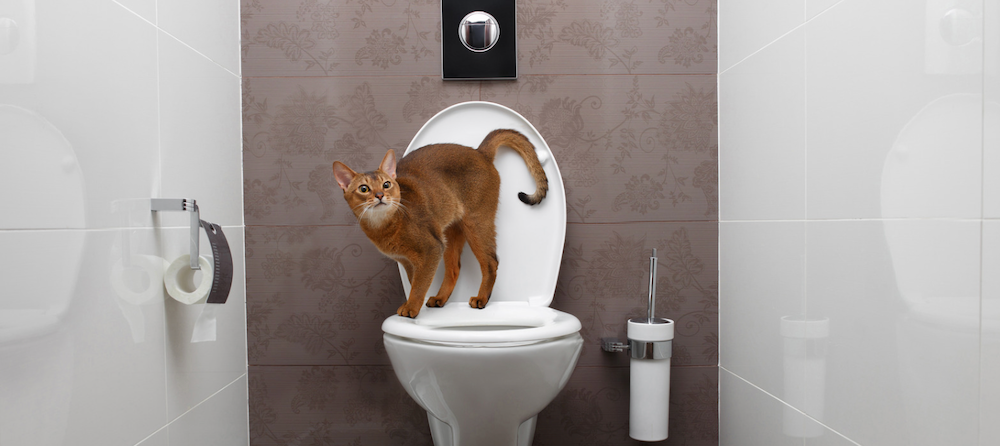We have uncovered this article relating to How to Dispose of Cat Poop and Litter Without Plastic Bags down the page on the net and concluded it made perfect sense to discuss it with you in this article.

Introduction
As cat proprietors, it's necessary to be mindful of just how we get rid of our feline buddies' waste. While it might seem convenient to purge cat poop down the commode, this practice can have damaging effects for both the atmosphere and human health and wellness.
Alternatives to Flushing
Thankfully, there are more secure and a lot more responsible means to get rid of cat poop. Think about the adhering to options:
1. Scoop and Dispose in Trash
One of the most usual technique of dealing with pet cat poop is to scoop it into an eco-friendly bag and throw it in the garbage. Make certain to utilize a specialized litter inside story and dispose of the waste immediately.
2. Use Biodegradable Litter
Go with naturally degradable pet cat litter made from materials such as corn or wheat. These trashes are eco-friendly and can be safely taken care of in the trash.
3. Bury in the Yard
If you have a backyard, consider burying feline waste in a marked area away from veggie yards and water sources. Make certain to dig deep enough to avoid contamination of groundwater.
4. Mount a Pet Waste Disposal System
Invest in an animal garbage disposal system specifically developed for feline waste. These systems make use of enzymes to break down the waste, reducing odor and ecological influence.
Health Risks
In addition to environmental problems, purging cat waste can also present wellness threats to humans. Cat feces might have Toxoplasma gondii, a bloodsucker that can cause toxoplasmosis-- a potentially severe disease, especially for expecting ladies and people with damaged body immune systems.
Ecological Impact
Purging cat poop introduces harmful pathogens and parasites into the supply of water, positioning a considerable threat to water environments. These pollutants can adversely influence aquatic life and compromise water high quality.
Final thought
Accountable animal ownership extends beyond supplying food and sanctuary-- it also includes appropriate waste monitoring. By avoiding flushing feline poop down the bathroom and going with alternative disposal techniques, we can lessen our ecological footprint and safeguard human health and wellness.
Why Can’t I Flush Cat Poop?
It Spreads a Parasite
Cats are frequently infected with a parasite called toxoplasma gondii. The parasite causes an infection called toxoplasmosis. It is usually harmless to cats. The parasite only uses cat poop as a host for its eggs. Otherwise, the cat’s immune system usually keeps the infection at low enough levels to maintain its own health. But it does not stop the develop of eggs. These eggs are tiny and surprisingly tough. They may survive for a year before they begin to grow. But that’s the problem.
Our wastewater system is not designed to deal with toxoplasmosis eggs. Instead, most eggs will flush from your toilet into sewers and wastewater management plants. After the sewage is treated for many other harmful things in it, it is typically released into local rivers, lakes, or oceans. Here, the toxoplasmosis eggs can find new hosts, including starfish, crabs, otters, and many other wildlife. For many, this is a significant risk to their health. Toxoplasmosis can also end up infecting water sources that are important for agriculture, which means our deer, pigs, and sheep can get infected too.
Is There Risk to Humans?
There can be a risk to human life from flushing cat poop down the toilet. If you do so, the parasites from your cat’s poop can end up in shellfish, game animals, or livestock. If this meat is then served raw or undercooked, the people who eat it can get sick.
In fact, according to the CDC, 40 million people in the United States are infected with toxoplasma gondii. They get it from exposure to infected seafood, or from some kind of cat poop contamination, like drinking from a stream that is contaminated or touching anything that has come into contact with cat poop. That includes just cleaning a cat litter box.
Most people who get infected with these parasites will not develop any symptoms. However, for pregnant women or for those with compromised immune systems, the parasite can cause severe health problems.
How to Handle Cat Poop
The best way to handle cat poop is actually to clean the box more often. The eggs that the parasite sheds will not become active until one to five days after the cat poops. That means that if you clean daily, you’re much less likely to come into direct contact with infectious eggs.
That said, always dispose of cat poop in the garbage and not down the toilet. Wash your hands before and after you clean the litter box, and bring the bag of poop right outside to your garbage bins.
https://trenchlesssolutionsusa.com/why-cant-i-flush-cat-poop/

I am just very interested by Can You Flush Cat Poo or Litter Down the Toilet? and I hope you appreciated our blog posting. Appreciated our write-up? Please share it. Help someone else find it. Thanks a lot for your time spent reading it.
Schedule And Pricing